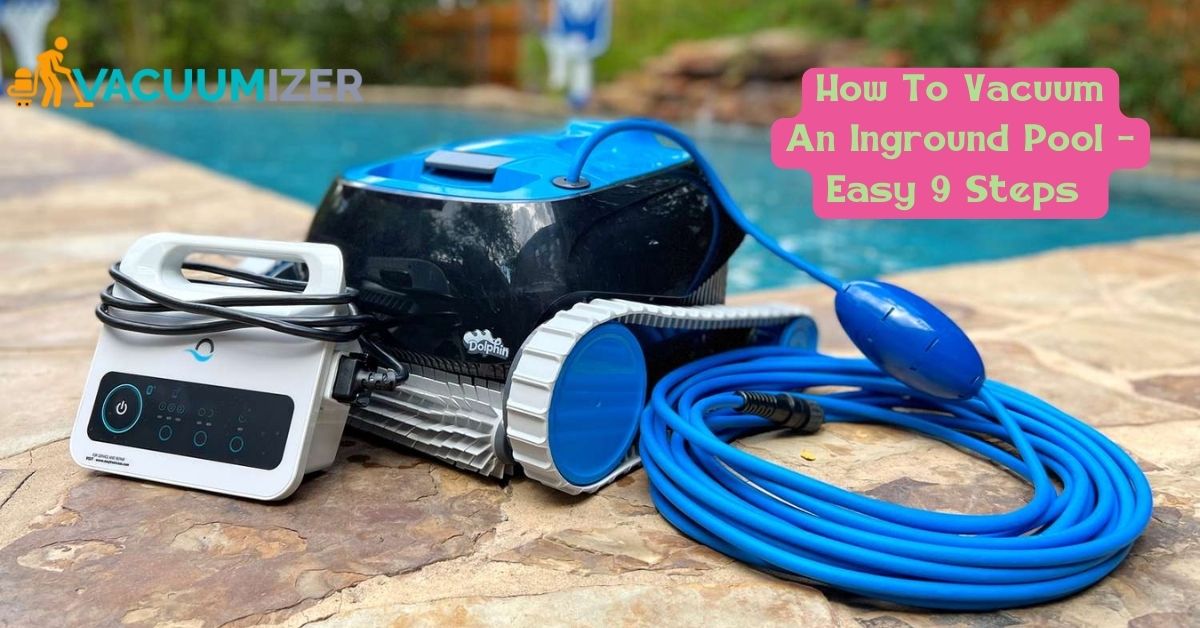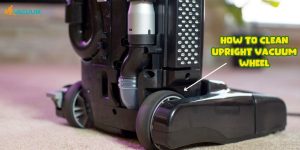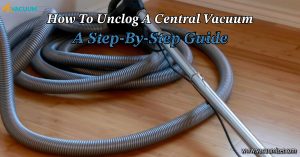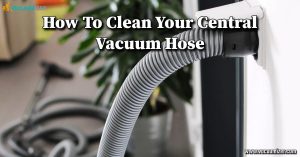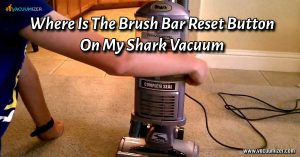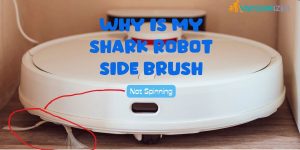Vacuuming an in-ground pool is an essential part of pool care that has many benefits for keeping the Pool clean and attractive. Regular cleaning not only makes the Pool look better by getting rid of dirt, leaves, and grit. However, it helps maintain the clarity of the water. Cleaning can take a little bit of time and physical work. Also, whether you choose a manual or robotic vacuum can affect how easy it is to use and how well it works.
In this guide, we’ll go over the step-by-step process of cleaning an inground pool. We’ll also tell you what chemicals are used to maintain proper water balance and sanitation.
Let’s Start!
First, you should know what equipment and materials you will need.
Table of Contents
What Tools and Equipment You Will Need – (6 Things)
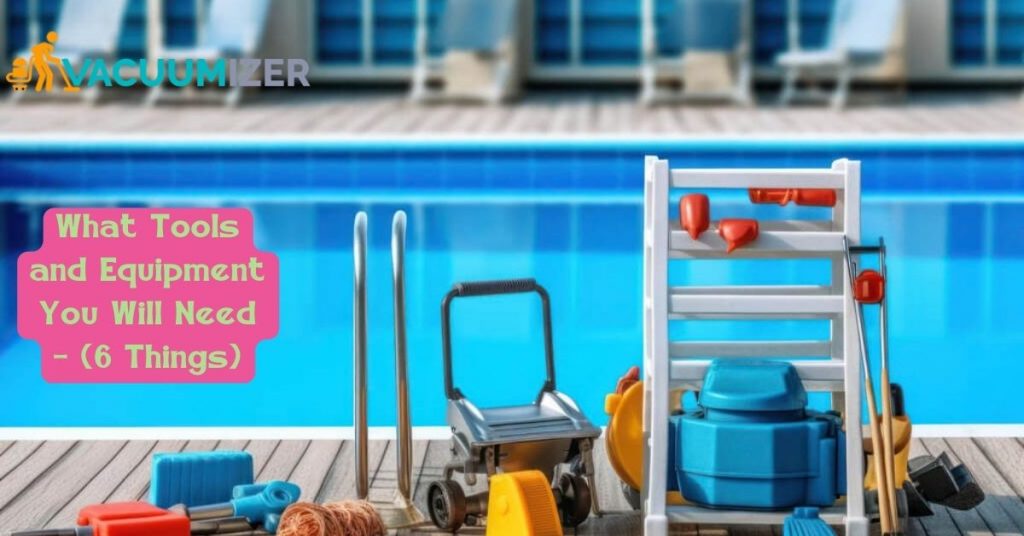
Before you start cleaning your in-ground pool, you should ensure you have everything you need.
What you’ll need is:
- Pool vacuum head and hose
- Telescopic pole
- Skimmer basket or vacuum plate
- Vacuum hose adapter (if required)
- Pool vacuum cleaner (manual or automatic)
- Water hose (if using a manual vacuum)
You must have the above tools ready before starting a thorough cleaning.
Now that you know what tools you will need, let’s stop now.
So, let’s find out what you need to remember before starting the cleaning process.
How to Prepare Pool for Vacuuming
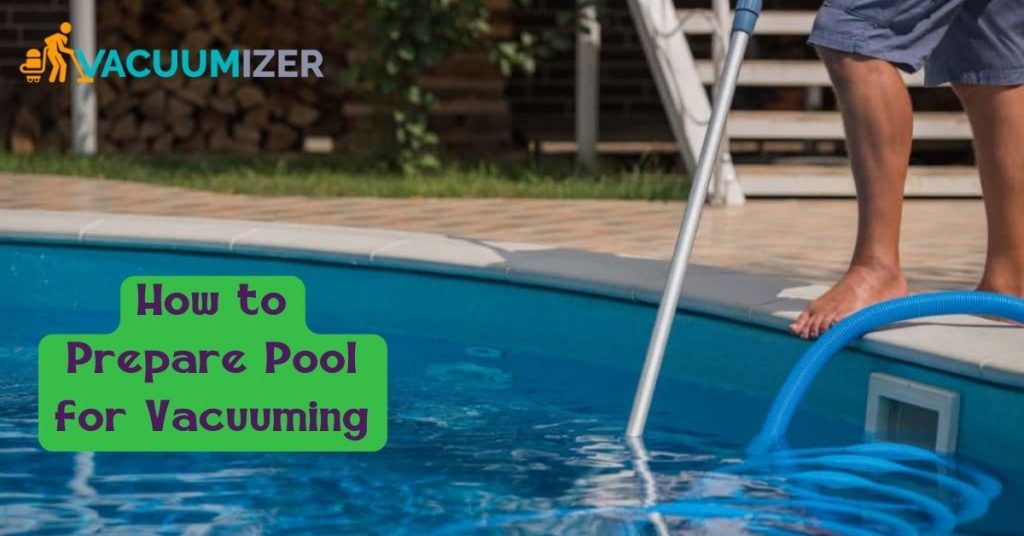
To prepare your pool for vacuuming, follow these 2 points
- Amount of water
- Removal of large junk bullets
Let’s know the details.
Adjusting water levels for efficiency
Before you begin cleaning, it’s important to check and adjust the water level in your pool. The right water level is usually between the midpoint and the top of the skimmer opening. Use a water line or an underwater pump to change the water level as needed:
- If there isn’t enough water, add water until it’s at the right amount.
- If there is too much water, you can get rid of the extra water with a hidden pump. You could also drain part of the pool if you need to.
How to Deal with Big Junk?
To make cleaning easier and keep your cleaner from getting clogged or broken, you need to remove any big pieces of dirt from the pool by hand.
This can include things like;
- Leaves,
- Twigs,
- Toys, and
- Other big things that the vacuum can’t handle.
You may be thinking about how to deal with big pieces of trash. Don’t worry! Look below:
Here’s how to handle big pieces of trash:
- Use a pool skimmer or a pool net with a wide scoop to remove leaves, sticks, and other waste from the top and the water. Work your way around the pool, paying particular attention to corners and skimmer bags where trash tends to gather.
Put the trash you’ve gathered in a proper trash can.
- If there are bigger things like toys or trees at the bottom of the pool, you can carefully pick them up with a pool net that has a long handle. Don’t be rough or you might hurt the pool cover or the net.
If you have done the above preparation, it’s time to start the cleaner.
We’re going to start cleaning up right now.
Easy 9 Steps to a Clean Inground Pool
Below are the Nine best and easiest Steps to share from our experience.
Step 1: Brush the Pool Walls
Start by brushing the pool walls. Start from one end and make your way around the pool, moving the brush upward and downward. Apply firm but not excessive pressure to remove algae, dirt, and other debris from the walls. Give specific focus to areas with visible stains or algae growth.
Step 2: Brush the Pool Floor
After the walls were brushed:
- Move on to the pool floor.
- Complete a full sweep of the floor, beginning at the shallow end and working your way to the deep end.
- Use overlapping strokes to ensure thorough cleaning.
- Again, apply sufficient pressure to dislodge debris without damaging the pool surface.
Step 3: Check and Clean Skimmer Baskets
- Turn off the pump and take the skimmer baskets out of the pool.
- Dump the things in the boxes into a trash bag or a waste pile.
- Use a hose to give the skimmer baskets a good rinse to get rid of any leftover dirt.
- Before putting the baskets back in the skimmer, make sure they are clean and free of anything that could get stuck in them.
Step 4: Vacuum the Pool
- Attach the vacuum head to the telescoping stick if you have a manual pool cleaner.
- Connect one end of the vacuum hose to the vacuum head and the other end to the skimmer or vacuum inlet.
- Put the vacuum hose in the pool and let the water fill it up to get rid of any air.
- Turn on the pool’s pump and, working carefully with a tiny gap between passes, vacuum the pool’s floor.
If you have a robotic pool cleaner, read the directions that came with it for how to set it up and use it.
Step 5: Test and Balance the Water Chemistry
Use your pool water test tools often to check the pH, the amount of chlorine, the total alkalinity, and the calcium hardness. Change these levels with the right pool chemicals to keep the water balance within the suggested ranges.
The following chemicals are used for regulating the flow of water and keeping things clean in swimming pools, such as:
- Chlorine
- pH Increasers (e.g., sodium carbonate or soda ash)
- pH Reducers (e.g., sodium bisulfate or muriatic acid)
- Alkalinity Increasers (e.g., sodium bicarbonate)
- Calcium Hardness Adjusters (e.g., calcium chloride)
- Algaecides
- Stabilizers (Cyanuric Acid)
- Shock Treatment
- Clarifiers
- Flocculants
- Mineral Systems (e.g., copper and silver ions)
These chemicals keep swimming pools clean and the water in balance.
Step 6: Monitor and Adjust
- Always monitor the quality and pH of the water in your pool.
- Change the amounts of the chemicals as needed to keep the water clear and safe for swimming.
Step 7: Backwash the Filter (if applicable)
- When the filter pressure increases, you might need to backwash a sand or diatomaceous earth (D.E.) filter.
- Follow the steps for backwashing that are given for your type of Filter.
Step 8: Clean the Pool Deck and Surroundings
Clean the pool deck, patio, and other places around the pool regularly. Using a leaf rake, pressure washing, or sweeping will help keep dirt and other waste from entering the pool.
Step 9: Winterize the Pool (if necessary)
If you live where it gets cold in the winter, you should follow the proper steps to protect your Pool during the off-season.
This may include:
- Draining some water,
- Adding winter chemicals and
- Covering the pool
By following these detailed steps and regularly cleaning and testing the water in your in-ground pool, you can ensure it is clean and safe.
Now we will know some usual questions and the answers.
FAQs On vacuuming an inground pool
Can I use an automatic pool cleaner for vacuuming?
Yes, automatic pool cleaners can be a convenient option for regular maintenance.
How frequently should I vacuum my inground pool?
How often you should vacuum depends on many things. such as;
- Water quality
- Environmental conditions, and
- Pool usage,
Generally, once a week is a good starting point, but you may need to change how often you do it.
Can I vacuum a pool with a vinyl liner?
Yes, you can clean a pool with a (equipment) vinyl line. But you must use a vacuum head made for vinyl surfaces to keep the liner from getting damaged.
Finally, we are going to the conclusion.
Video on vacuum on inground pool
Final Say
Vacuuming your inground pool is essential to enjoy a clean and safe swimming experience. Following our simple step-by-step guide lets you keep your pool sparkling and ready for fun. Regular upkeep can be a bit of work, but the result is a crystal-clear pool where you can play and rest. So, keep doing what you’re doing well, and enjoy swimming.

Hello, I’m Ethan Mitchell. I studied Geography and Environmental Management at the University of Florida. I want to share with you the light of my learning and the beautiful benefits of research. When it comes to cleanliness, the home comes first, so I started my journey out of a personal interest in keeping a house clean.

